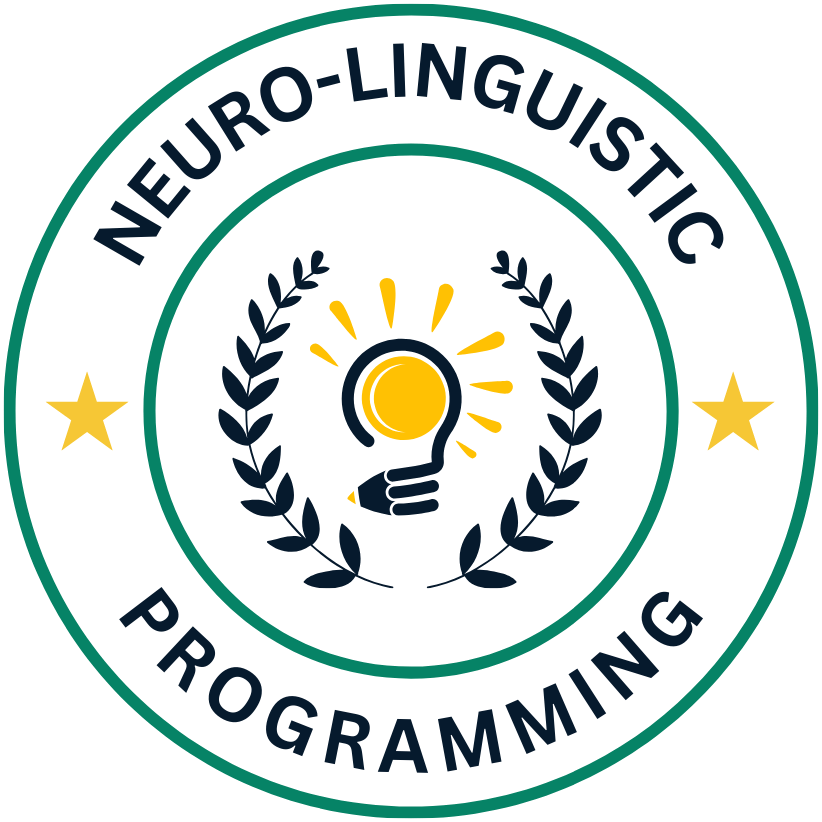Therapy can often be a challenging journey, but incorporating NLP (Neuro-Linguistic Programming) techniques can facilitate significant breakthroughs in your healing process. By focusing on the connections between your thoughts, language, and patterns of behavior, NLP can empower you to unlock new perspectives and reshape limiting beliefs. With the right guidance, these techniques enable you to communicate more effectively with yourself and others, ultimately helping you to navigate emotional hurdles and achieve lasting transformations. Explore how NLP can enhance your therapeutic experience and lead you toward a more fulfilled life.
Understanding NLP Techniques
Definition and Principles of NLP
For many individuals exploring therapy, understanding NLP, or Neuro-Linguistic Programming, can illuminate how thoughts, language, and behavior are interconnected. This psychological approach is about changing patterns of thinking and communication to achieve desired outcomes. By breaking down the components of experience, NLP reveals the influence of past experiences on present perceptions, guiding you to identify and modify limiting beliefs that may affect your mental well-being.
Around these principles, NLP emphasizes the power of language and internal representation in shaping your reality. By integrating both the conscious and subconscious processes, NLP offers a framework that can enhance your self-awareness and communication skills. This holistic approach unlocks pathways to personal insight, allowing you to reframe situations and make positive changes in your life.
Key NLP Techniques Relevant to Therapy
Techniques within NLP focus on various tools that can facilitate profound personal transformation. Among the most effective are anchoring, reframing, and modeling. Anchoring involves creating a mental or emotional trigger that evokes specific feelings or states of mind, helping you access resourceful emotions when needed. Reframing allows you to view situations from different perspectives, enabling you to reposition your mindset and foster resilience. Meanwhile, modeling encourages you to observe and adopt the successful behaviors and strategies of others, potentially paving the way for your own breakthroughs.
Techniques such as timeline therapy can also assist in addressing past traumas by guiding you to revisit and reinterpret those significant moments. By exploring and understanding your life experiences within the context of your timeline, you can release emotional baggage and gain clarity. Each of these NLP techniques works in concert to support your therapy journey, providing you with tools to navigate challenges and foster short and long-term improvements in your mental health.
The Role of Language in Therapy
While language acts as a bridge between clinicians and clients, it holds the power to shape your experiences and perceptions significantly. In therapy, the way you articulate feelings and thoughts not only influences how others understand your situation but also what you believe about yourself and your circumstances. The words you choose can either empower or limit you, creating a framework for your perception of reality. This linguistic framework, in turn, impacts your emotional state and can dictate the direction of your therapeutic journey.
How Language Affects Perception
Beside the direct communication of thoughts and feelings, language serves as a lens through which you view the world around you. Subtle shifts in wording can alter your interpretation of events and situations, shaping your understanding and emotional responses. Positive language can foster resilience and optimism, while negative language can perpetuate feelings of helplessness and despair. Your therapist might encourage you to reconsider certain phrases or narratives you use, as refining your language can lead to a transformed perspective on your experiences.
Utilizing Language Patterns for Change
Therapy employs specific language patterns that can facilitate meaningful change in your thought processes. These patterns can serve as tools to reframe your experiences, promoting healthier and more adaptive ways of thinking. For instance, employing metaphors can help you visualize challenges differently, enabling you to process emotions more effectively. Your therapist may also introduce you to sensory-based languages—paying attention to how you describe your feelings in terms of visual, auditory, or kinesthetic experiences—to stimulate deeper insights and connections.
Utilizing these language patterns allows you to dissect and reconstruct your internal dialogue, leading to breakthroughs in self-awareness and self-compassion. As you engage with language in a meaningful way, you can identify and replace limiting beliefs with empowering affirmations. This approach not only enhances your therapeutic experience but also equips you with practical strategies that can be applied long after your sessions have ended.

Building Rapport and Trust
Any effective therapeutic relationship begins with the establishment of rapport and trust between you and your client. This foundational aspect sets the stage for open communication, enabling clients to feel safe while expressing their thoughts and emotions. By utilizing NLP techniques, you can create an environment that fosters this connection, thereby enhancing the therapeutic experience. When your clients sense that you genuinely understand their experiences and perspectives, they are more likely to engage in the healing process with commitment and vulnerability.
Establishing Connections with Clients
Building rapport requires active listening and empathy, allowing you to connect with your clients on a deeper level. NLP techniques such as mirroring and matching can be instrumental in achieving this goal. By subtly mirroring your client’s body language or speech patterns, you can create a sense of familiarity and understanding. This strategy helps clients feel more comfortable, which can lead to more meaningful dialogues and breakthroughs during therapy sessions.
Techniques for Enhancing Therapeutic Relationships
On top of establishing connections, enhancing your therapeutic relationship requires intentional practice and strategies. Utilizing NLP techniques such as reframing, pacing, and leading can help you navigate complex conversations and promote deeper insights in your clients. When you adapt your approach based on your client’s emotional state and communication style, you are better positioned to guide them effectively towards their therapeutic goals.
The power of NLP techniques in enhancing therapeutic relationships lies in their ability to create a more personalized experience for your clients. By adjusting your language, tone, and body language, you effectively tailor your interactions to match those of your clients, which helps reinforce that bond of trust and understanding. This customized approach not only encourages active participation but also instills a sense of hope and possibility within your clients, empowering them as they navigate their journeys toward personal growth.
Overcoming Limiting Beliefs
Unlike traditional therapeutic approaches that may focus solely on symptom alleviation, NLP techniques empower you to identify and overcome the limiting beliefs that hold you back from achieving your goals. These beliefs often manifest as negative thought patterns that can sabotage your efforts for personal growth and transformation. By recognizing and addressing these mental barriers, you can build a foundation for lasting change, setting the stage for deeper emotional healing and enhanced self-awareness.
Identifying and Challenging Negative Beliefs
Around your journey of self-discovery, you may stumble upon certain beliefs that dictate how you perceive yourself and your abilities. These negative beliefs can often be deeply ingrained, developed over time through experiences, and social conditioning. NLP techniques guide you in pinpointing these harmful thoughts and examining their origins, allowing you to challenge their validity. By actively questioning the truthfulness of these beliefs, you can start to break down their power, creating a pathway toward healthier, more empowering thoughts.
Reframing Perspectives for Empowerment
Reframing is a powerful NLP technique that allows you to shift your perspective on situations that may have previously hindered your progress. Rather than viewing a setback as a failure, you learn to see it as an opportunity for growth and learning. This shift in thinking enables you to embrace challenges with a more constructive mindset, fostering resilience and adaptability. By training your brain to recognize the potential for positive outcomes, you can cultivate a more empowered self-image that enhances not only your mental well-being but also your relationships and overall life satisfaction.
Negative beliefs can cloud your perception and impact your decision-making, often leading to a cycle of self-doubt and avoidance. By reframing these beliefs into more advantageous narratives, you can transform your internal dialogue and unlock your potential. This process encourages you to visualize your success and embrace new possibilities, ultimately paving the way for a more fulfilling life. Through NLP, you can develop the tools to maintain this reframed perspective, ensuring you continue to thrive as you pursue your goals.
Enhancing Emotional Awareness
Not fully understanding your emotions can hinder your overall therapeutic process. Developing emotional awareness is imperative for navigating life’s challenges and achieving personal growth. By employing NLP techniques, you can uncover the emotions that shape your thoughts and behaviors. This heightened emotional awareness not only informs your choices but also paves the way for deeper insights and more meaningful reflections during therapy sessions.
Techniques for Recognizing and Expressing Emotions
To effectively recognize and express your emotions, you can utilize various NLP techniques such as anchoring and reframing. Anchoring involves connecting a specific emotional state to a particular gesture or word, allowing you to access that emotional resource when needed. This technique can help you become more conscious of your emotional responses and facilitate their expression in a healthier manner. Additionally, reframing can aid in viewing your emotions from a different perspective, which can provide new insights and lessen the intensity of negative feelings.
Strategies for Emotional Regulation
After you have developed a foundation for recognizing your emotions, it becomes imperative to employ strategies for emotional regulation. These strategies can help you manage your emotional responses, making it easier to cope with life’s challenges and pressures. Techniques such as visualization and positive self-talk can assist you in maintaining control over your emotions, allowing you to respond thoughtfully to situations rather than react impulsively.
But it’s important to understand that mastering emotional regulation doesn’t happen overnight. It involves practice and patience as you learn to implement these strategies consistently. By integrating NLP techniques into your routine, you can gradually enhance your emotional resilience and develop a healthier relationship with your feelings. This ongoing process of emotional regulation not only supports your personal therapy goals but also improves your overall well-being and effectiveness in managing stressors in your life.
Implementing NLP in Therapeutic Settings
After exploring the foundational theories of NLP, the next step involves applying these techniques seamlessly within therapeutic environments. You can integrate NLP strategies to address various mental health concerns, enhancing the overall therapeutic experience for your clients. This approach often involves customizing sessions to accommodate the unique needs and goals of each individual, making therapy not only more relatable but also more impactful. By harnessing language patterns, visualization techniques, and sensory modalities, you can facilitate transformative experiences that lead to lasting change.
Case Studies and Practical Applications
Between multiple studies conducted in various settings, NLP has shown promising results in therapy. The evidence highlights how effective these techniques can be in fostering breakthroughs. Here’s a detailed list of notable case studies demonstrating the effectiveness of NLP in therapeutic contexts:
- Case Study 1: A study involving 100 adolescents experiencing anxiety found that 78% reported significant reductions in symptoms after six weeks of NLP-based therapy.
- Case Study 2: In a trial with 50 adults facing depression, 82% achieved noticeable mood improvements after eight sessions, with sustained benefits reported at three-month follow-ups.
- Case Study 3: An evaluation of NLP techniques in couples therapy revealed a 70% satisfaction rate, with participants noting increased communication skills and emotional connection.
- Case Study 4: A program aimed at improving self-esteem using NLP techniques recorded a 90% success rate among 75 participants, reflecting substantial increases in self-reported confidence levels.
Ethical Considerations for Therapists
Around the integration of NLP in therapy, you should be mindful of ethical considerations that guide your practice. These considerations are necessary for maintaining the professional integrity and trust of your client relationship. It’s vital to ensure that NLP techniques are applied responsibly, providing informed consent to your clients regarding what to expect during sessions. Additionally, you must be aware of cultural sensitivities and individual preferences when employing NLP strategies, tailoring your approach to respect diverse backgrounds and experiences.
Plus, always prioritize the well-being of your clients by regularly evaluating the effectiveness of the NLP techniques used. It is necessary to stay informed about potential risks and to remain open to feedback from your clients. By creating a safe and supportive environment, you can foster a therapeutic dynamic that not only encourages open communication but also promotes a deeper understanding of their experiences. This way, you can guide them towards achieving their desired breakthroughs, built on a foundation of trust and ethical responsibility.
To Wrap Up
So, as you probe into the world of therapy, integrating NLP techniques can significantly enhance your personal growth and emotional well-being. By using strategies such as reframing negative thought patterns and establishing positive anchors, you can unlock new perspectives on challenges you face. These techniques empower you to rewrite limiting narratives, facilitating breakthroughs that can propel your journey toward self-discovery and healing.
Moreover, NLP techniques enable you to create a deeper connection with yourself, fostering self-awareness and greater emotional resilience. As you embrace these practices, you may find that your therapeutic experience becomes more dynamic and transformative. Ultimately, by leveraging the principles of NLP, you lay the groundwork for lasting change, paving the way for a more fulfilling and enriched life.
FAQ
Q: What are NLP techniques and how can they be applied in therapy?
A: NLP, or Neuro-Linguistic Programming, consists of various techniques that focus on the relationship between neurological processes, language, and behavioral patterns that have been learned through experience. In therapy, practitioners can use NLP techniques to help clients reshape negative thoughts, enhance communication skills, and develop more empowering belief systems. By employing techniques such as reframing, anchoring, and modeling, therapists can assist clients in identifying and changing limiting behaviors and thoughts, leading to significant personal breakthroughs.
Q: Can NLP techniques address specific issues such as anxiety or phobias in therapy?
A: Yes, NLP techniques can be particularly effective in addressing specific issues like anxiety or phobias. For instance, a therapist may use the technique of anchoring to help clients create a positive emotional state that they can access whenever they feel anxious. By associating a specific physical gesture or touch with the calmness they experience in therapy, clients can learn to recondition their responses to anxiety-inducing situations. Additionally, techniques like ‘fast phobia cure’ can help clients reframe their experiences and eliminate irrational fears in a short period.
Q: How do NLP techniques facilitate client autonomy and self-discovery in therapy?
A: NLP techniques empower clients by promoting self-awareness and encouraging them to take ownership of their emotional and mental processes. For example, through techniques like modeling, clients are guided to examine successful behaviors in others that they can adopt in their own lives. This process not only fosters a sense of independence but also encourages clients to discover their personal strengths and resources. As clients learn to apply NLP strategies in their daily lives, they gain confidence in their ability to overcome obstacles, which significantly enhances their overall therapeutic experience.



